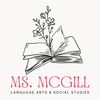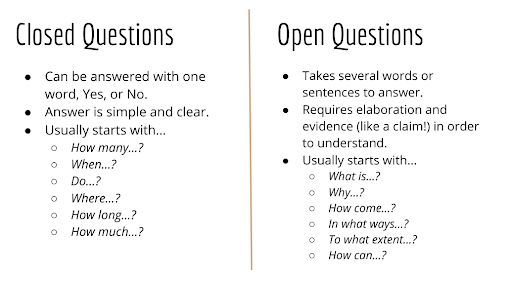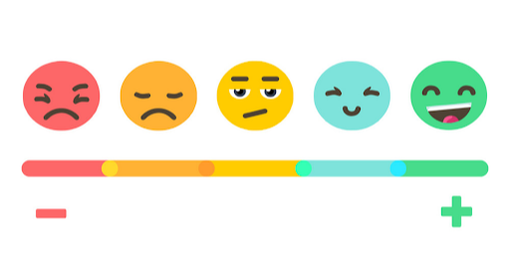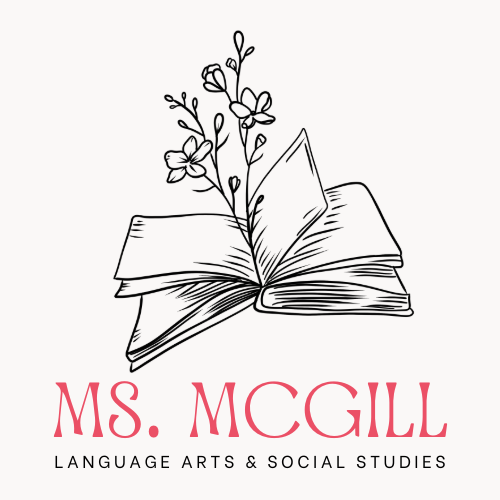|
Dear families, Good afternoon! This week I want to take some time to talk with you about QUESTIONS. This year I’ve spent a lot of time talking and explaining, and as a teacher I answer many questions every day. Some of these questions are quick and easy to answer, and other questions are huge, requiring research and discussion to answer. And some questions are huge, evolving questions, and it’s unlikely that we will answer them in years, if ever. We group our questioning into two big groups: Closed and Open. Closed questions are small. They have an answer that is a single word, fact, or phrase, and we often know the answer. We can also call these “Google” questions, because they are questions that can be answered with a quick search online to pull up the resource. These questions often start with words like How many…, When... , Where…, Do…? Open questions are bigger, and they are also harder to answer. Open questions are broader and they require research and discussion to answer. These are the questions that we want to cultivate in class and in life, because they require more thinking to answer. These questions often start with the words Why…, How come…, In what ways…, To what extent…? Today I invite you to ask some questions. What do you want to know? What do you want to learn, or teach? Are there any bigger, open questions you have about the work we are doing at school and the learning your children are doing? Please send me your questions and wonderings - either here or by email - and I will do my best to answer them over the next few blog posts. Thank you in advance!
Sincerely, Ms. McGill
0 Comments
Dear families, Good afternoon! In social studies, we have been diving into American History, using the skills of historical thinking to make the past relevant to today. We will also soon be asking, “What’s the Mood?” in order to understand how the feelings of the people in the colonies changed over time. As we move toward the American Revolution and the conflict that defines our nation, we have been examining the shifting feelings in the colonies to identify what the colonists thought and why. We’re might use a small mood chart to do this work, shown below: In history, identifying mood means looking at the events of the past and the way people reacted to those events, asking ourselves how those people felt. We are shifting perspective, putting ourselves into the shoes of those colonists and asking how we would have felt if we were in their position. It’s been interesting to see how the attitudes of American colonists shifted as the colonies moved toward war, and how some people began to feel more strongly than others about controversial events.
I wanted to share this with you today because as we think about the mood of the colonists and others in the colonial regions, we will also discuss our own moods and feelings. We work to understand what are were feeling, knowing that all feelings are valid and important. And then we ask ourselves, “What action can I take based on this feeling?” If we are in a positive mood, how can we share that with others? And when our mood turns negative, how can we take an action that will help us change our mood toward positivity? How can we shift our perspective to understand what others may be thinking and feeling, and why? And as the spring starts to warm us, and the sun stays out longer, moods may improve. The days are bright, warm, and beautiful. We can go outside to a park, read in the shade beneath a tree, or just have a picnic in the backyard. Looking back on history, it is important to understand how the feelings of a group of people connect to the actions they took -- what did they feel, why did they feel that way, and how did they act based on that feeling? We can do the same work for ourselves, in this challenging time. Keep checking in and asking, “What am I feeling” and “What action will I take next?” Happy spring! Ms. McGill Dear families and students,
Good afternoon and happy Friday! I hope this post finds you well. We have been working hard in B7, especially on deep thinking practices in Language Arts and Social Studies, and we are nearing the end of the third marking period. This means that we are wrapping up our units with big projects and tests, and the students need to review all that they know through studying! So today I wanted to review some study strategies with you, which your children can use to independently review material at home, to feel more confident at school. This is essential during testing times, but can also be useful every day to build your child’s confidence in their knowledge and learning. In class we have discussed study strategies that the students use to review. Here are some of the ones the students have mentioned:
All of these are fantastic strategies for managing time and reviewing work. Check in with them this weekend to solidify your child’s review routines. How do they like to study? What works best for them? Kindly, Ms. McGill Dear families,
In the last few weeks, we have been reading Nonfiction in order to prepare for Arguments. No, I don’t mean the kinds of arguments where the participants get angry about an issue and shouting ensures. This kind of argument is the written kind, where the writer has a particular point of view and uses evidence to prove that point of view and share why it is important. This kind of writing is the kind often seen on news sites and the Op/Ed sections of newspapers. It is writing that takes big ideas about a social issue and tries to share that idea with the world in a logical way. We have also called this kind of writing “debate writing” because it is formal and structured - just like a debate - and considers both sides of an issue. In class we will soon be writing Argument Essays in the form of Articles – about important issues in the world that we can work to change. The students have already done some deep reading about these issues, and next week we will begin writing. This topic in writing concerns 3 big strategies:
As the students get ready to write critically, they are practicing the routines for gathering facts and ideas and thinking about them critically. They are working to write long, elaborate, and make connections between ideas. This is all critical to write critically and logically, and it encourages the practice of curiosity and flexibility. Best wishes in reading (and writing), Ms. McGill Dear families,
Have you ever read an article that made you rethink something in the world? Maybe it persuaded you to change your mind, or shared a new perspective on something you thought you knew well. A great essay works very much like those articles, using evidence from the stories we read to connect to a big lesson in the world and provide the reader with new insights about life. In order to make a powerful essay, you have to have big ideas. You can’t just understand that the characters in stories face problems - you have to ask yourself, “How do these characters deal with the problems they face, and how can we learn a lesson from the way they solve their problems?” Brainstorm BIG ideas that correspond with themes such as acceptance, tolerance, patience, and courage. When explained well and supported with evidence, these big themes can teach a lesson to the reader and change the way they interact with the world. Your children are crafting essays that tackle big topics like this. They brainstormed themes in their stories and sought out ways in which those stories teach a lesson to the reader. They are pushing themselves to analyze stories with the aim of finding evidence to support their thinking, and are discovering the ways in which authors use symbolism and multiple layers of meaning in a story in order to share their big ideas. As we continue to write and analyze texts this year, the students will continue to write essays and explore big themes. And as they do, they will ask themselves, “Is my essay powerful?” To discover whether you have the makings of a powerful essay, you need three things.
As I have shared in the last few weeks, the form of an essay is relatively simple. The parts of an essay are best practiced a bit at a time in order to allow for mastery. This is not the hardest part. Balancing all that while making sure that an essay is powerful can be a challenge at first. Don’t be afraid to focus on one part at a time, and always be sure to have someone read the essay before finalizing it in order to make sure everything is clear and organized. Best regards, Ms. McGill Good afternoon,
Today I want to continue to think about the academic essay and how it is written. Last week I discussed how the academic essay can be a challenging topic to master, and by working on the parts of the essay a bit at a time, the students will become confident and skillful. The next step to think about with an essay is to ask yourself “What are the parts of a great essay?” and “How do I know if I included all the correct parts?” In class we have been working hard to answer those questions. We examined great essays in Language Arts in order to find out what the parts of those essays were, and what the strategies were that made the essays great. We have looked at the Introduction and Conclusion of an essay. These are the first and last paragraphs of an academic essay, and they are critical to shaping an essay of quality and substance. A good Introduction gets your reader interested in the topic and helps them understand what they will learn about. A good Conclusion brings all the parts of the essay together, making a connection between the parts of evidence and the bigger theme or lesson that can be learned from that moment in history or the story being analyzed. We also considered the Body Paragraphs of essays. An academic essay can have anywhere from 1-4 Body Paragraphs, depending the evidence and strategy you are using to prove the claim. Body Paragraphs are generally longer than introductions and conclusions, and because the evidence is located in the Body Paragraphs, they can be the most complex part of the essay. The Body Paragraph has 3 jobs: to introduce evidence that supports the claim, to explain how that evidence supports the claim, and to convince the reader to agree with the essayist’s point of view. This is a lot of work, as the Body Paragraph has to be clear, persuasive and interesting. We examined some Body Paragraphs together and have a list of Parts and Strategies that make a Body Paragraph great. When practicing an academic essay, it is often helpful to take things one step at a time. Practice working on one section, making that section fantastic before moving onto the rest. Using this strategy will help you and the students to check in with their work, making sure that they are writing an essay that is clear, interesting, and well-written. Best regards, Ms. McGill Dear families,
Of all the types of writing in the world, the essay is one of the most highly regarded. Critical essays are written in school in order to analyze topics in history and break down the layers in literature, they are written by scholars and scientists in order to share their ideas and prove their thinking, and they are used by authors to explore deep ideas in the form of a short story. The structure of an essay can seem intimidating, especially at first, but it is also an essential and powerful tool for communicating ideas. We are working on the strategies to craft essays during Language Arts and Social Studies. These skills carry over to writing about Science and Math as well, as they are not just about format, but how to structure critical thought. The students are familiar with the general form of an essay because they have been writing critically about their reading for years. But this year we’re taking essays to the next level. This year we’re diving into deep, meaningful essays in LA and SS. We’re asking ourselves what those essays look like and sound like, and how we can craft powerful essays of our own. One of the most challenging aspects of writing an essay is staying on track and focused during a short period of time - as graded essays are often written in a single class period of about 45 minutes. This is a practice that the students are trying out this year, with the aim of mastery in the future. It is not expected that any student will have mastered the art of essay writing by the end of fifth grade, merely that they are familiar with it and making progress toward gaining the necessary skills and strategies. To help students grow their skills in the art of essay writing, it is necessary to practice, practice, practice! With that in mind, we work every day in class to move toward the skills necessary to share evidence clearly and convincingly. And during unit tests and performance tasks, we practice the skill of timed writing. Writing to time can be high pressure for students, especially the first few times. It is best to practice regularly, in addition to the work done in school. Here are a few recommendations for practicing writing essays at home:
Essays are not mastered in a day. They require practice. The strategies above can help you support your child in mastering the form. All of the students have wonderful and meaningful ideas -- now we’re going to take the next step in sharing them with others. Happy writing, Ms. McGill Dear families, As we enter February, we are fast approaching the 100th day of school. While we do not mark this occasion at LMS the same way it has been marked in the past, it is nonetheless important to acknowledge this special occasion. We are more than halfway through the year, and your children have been working so hard! As the work of fifth grade intensifies, I wanted to take a moment to share with you some thoughts about academic independence. While fifth grade has many graded skills, academic independence is one of the most crucial things that your child is working to master. This involves taking responsibility for academics and the process of learning, mastering the organizational and life skills to make school and learning a smooth process. Academic independence is hard. It involves skills that carry us through life, from childhood and into adulthood. I am sure we all have memories of organization systems that worked well and made life easier, or of those that didn’t work out and left us feeling frustrated. This year your child is stepping away from teacher support and beginning to develop their own processes and strategies for academic independence.These strategies may be unique to each child, but they are crucial. Academic independence takes several forms:
Developing academic independence is part of the process of becoming a mature learner. For some children, this happens easily and quickly. Other children struggle with the process, and need explicit instruction in which strategies might work for them. This year in fifth grade, we are working to help your child understand the parts of academic independence and practice these skills in a safe, supportive environment. We know that the students are learning and we support them in their practice. We also see that they are learning fast. We know they can do it, and we are here to support them as they learn and grow each day. Thank you, as always, for your time and support, Ms. McGill Dear families,
How do you feel about writing? Often people have strong feelings about the art of writing - either they love it or they hate it. But no matter how you feel, you know that writing is essential to the world we live in. We write every day - whether it be emails and text messages, essays and critical analysis, or a story that we are inspired to tell. Writing is the process of sharing your thoughts with others, and while it is always enlightening, it can also be challenging and difficult. Today I want to share with you about the process of writing. What does it look like? How do writers put stories together, or essayists put their ideas into written form? Why do writers and authors of all different kinds choose to write, and how can we be writers every day? Academic writers and storytellers all begin in the same place: they are passionate about what they want to say, and they know that writing is the best way to share their ideas. As students, you do not always have the choice of what and when to write, so writing can be a challenge. Every day we practice the methods of writing, which help to build a writing life and help us feel more confident and accomplished as writers. Your children are talented, amazing writers, and they are practicing these methods to grow their skills.
The writing process is simple, and in its simplicity it can be challenging. The hardest parts are planning ahead for what you want to write, keeping that plan in mind as you draft and revise multiple times, and deciding how to publish in the end. This applies to both narrative writing (stories) and critical writing (essays). This is what we practice in class. The process, which is a series of repetitions that grow and push toward skill. Keep this in mind as you child drafts at home. Multiple drafts are good. Revisions are good. They just need to keep that end goal in mind. Happy writing, Ms. McGill Dear families,
Let me let you in on a secret. As teachers, we often think about “levels” of questioning when we are working with students. We do this to help students deepen their understanding and improve their critical thinking skills. We work with students using different levels of questioning in order to push them, and to target different thinking skills. As we approach the season of testing and assessments again, I wanted to share these question types with you. Level 1
Level 2
Level 3
Level 4
We use all types of questions each an every day. One lesson may stick to Level 1 questions, while another moves straight to Level 4. Students are never exclusively thinking about one level of questioning—by mixing the levels and combining them, we help students see the world in different ways. And we are always pushing them to ask and design questions of their own. Ms. McGill |




